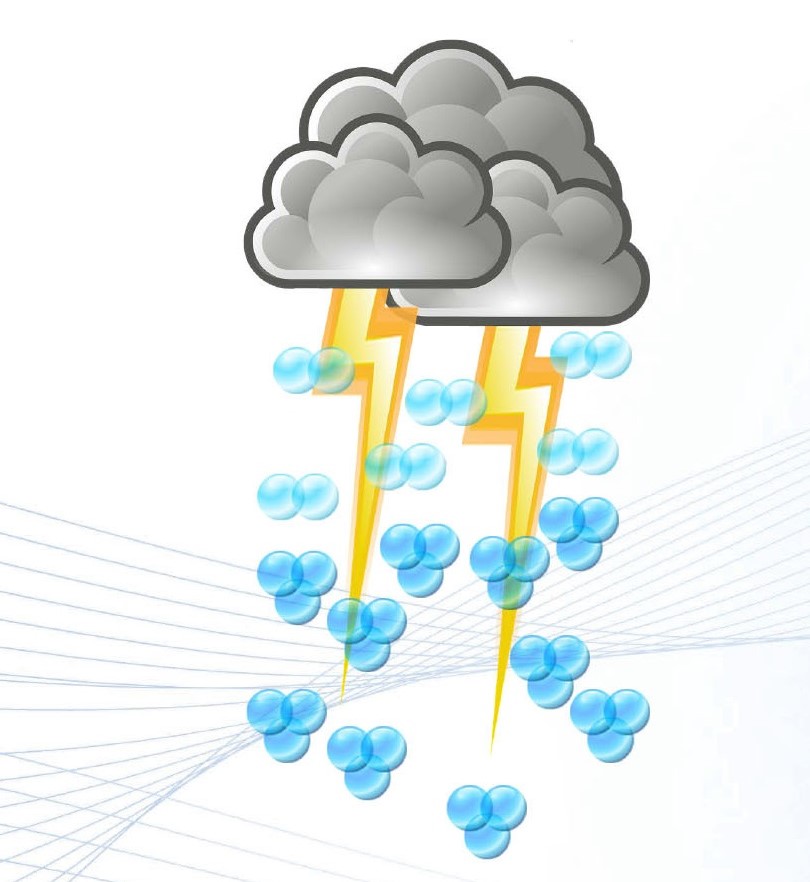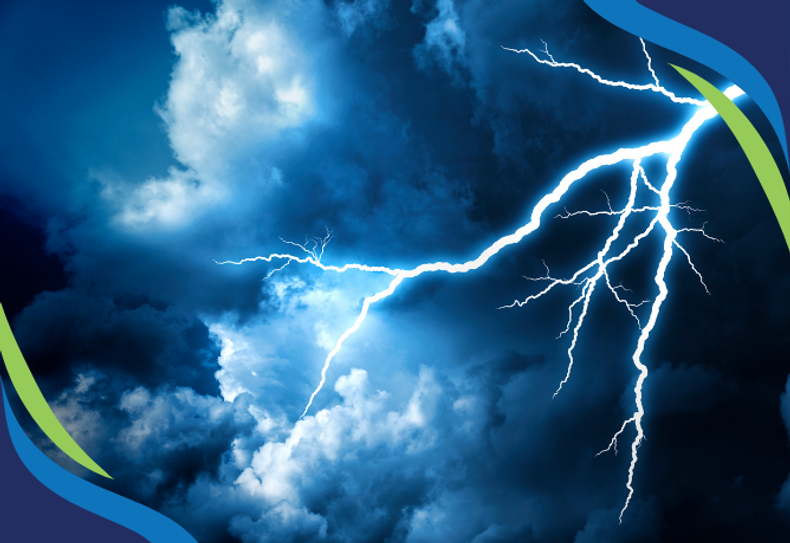Ozone from Lightning
Assumptions
- The lightning strike is 5,280 feet (1 mile) above the ground
- The ionized gas (corona) affected by the lightning strike is 3 feet in diameter and remains constant from cloud to ground
- 90% of the gas in contact with the corona is converted to ozone
- The density of air is constant (0.089 lbs/ft3) through the 1 mile long corona
Calculate the volume of the corona (VC):
VC = πr2 X L {r=1.5 ft, L = 5,280 ft}
VC = π(1.52) X 5,280 = 37,322 ft3
This volume needs to be adjusted since only 20.9% of this volume actually contains oxygen.
VCC (corrected) = 37,322 ft3 X 0.209 = 7,800.3 ft3
Calculate the mass of oxygen (MOx) in the corona:
Density of oxygen (DO) is 0.089 lbs/ft3 (1.429 kg/m3)
MOx = DO X VCC
MOx = 0.0804 X 7,800.3 = 627.1 lbs of oxygen
Since the average lightning strike is between 100 million and 1 billion volts, we assume that 90% of the oxygen is converted to ozone (O3,) the remaining 10% reverts back to oxygen (O2.)
 Calculate the mass of ozone (MOz) in the corona:
Calculate the mass of ozone (MOz) in the corona:
We now take gas molecular weights (MW) into account.
The MW of oxygen is 32 and the MW of ozone is 48:
MOz = 627.1 X (MW O2/MW O3) * 90%
MOz =627.1 X 32/48 * 0.9 = 376 lbs O3
Using the above assumptions, for every lightning strike there is 376 pounds of ozone produced. The average storm can have as many as 1,000 lightning strikes hit the ground. This equates to 376,000 pounds (188 tons) of ozone produced during each storm.

